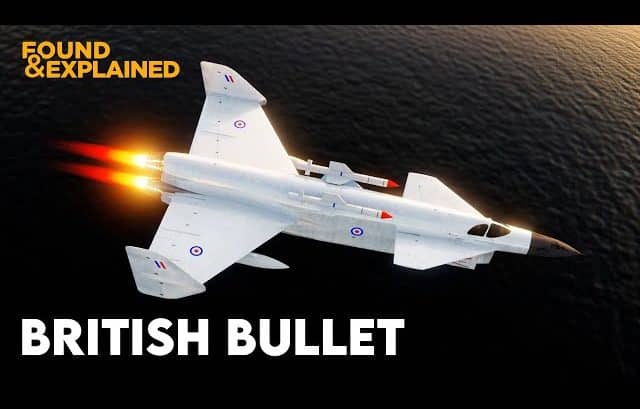The Vickers-Armstrong Type 559 559 is a supersonic interceptor plane developed by the British aircraft company Vickers-Armstrong.
Read all about the UK’s newly built overkill super interceptor.
Soviet Nuclear Bomber Threat
Nuclear-capable Soviet bombers posed the biggest threat to the stability and freedom of the West during that time, and in response, there was a need for an aircraft with a Mach 2.0 or greater that was built around powerful jets with the possibility of utilizing rockets to help with output thrust.
Britain, during this time, needed a new cutting-edge supersonic interceptor.
Operational F155
A contest was held, called Operational F155 to develop a new supersonic interceptor by 1962. The Type 559 design submitted by Vickers Armstrong stood out since it was unlike any other aircraft designed in that era.
The jet had an unorthodox canard design with a massive chin intake. This intake, split vertically would feed two giant reheated gyron engines that would be stacked on one another. The reheated part of the engines is important as it would significantly increase its thrust, making it the fastest jet in the British arsenal.
Overkill Aircraft
This interceptor was also believed to climb a height of up to 60,000 feet in two minutes at a speed of Mach 2.5. It also has the rare feature to have missiles on top of the plane instead of under it.
These missiles may have included a nuclear warhead, increasing lethality. It also has a measurement of 68 feet long, and 42 feet wide.
Drawbacks
Unfortunately, the AW-169 and the Fairey’s Delta III bested the Vickers 559. Although performance and handling were superior to the two, there were concerns that lateral control would be too difficult, and the canard layout was too unknown at that time.
The weapons above the plane instead of under, were also believed to increase drag, something that you wouldn’t want from an interceptor.
Not the End
Although the project was canceled, in the 60s Vickers Armstrong would bring its research of the 559 to the English Electric Aviation firm, combining their designs to be incorporated into the new version of the English Electric Lighting that would fly throughout the next couple of decades.



